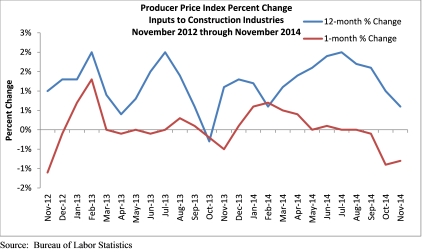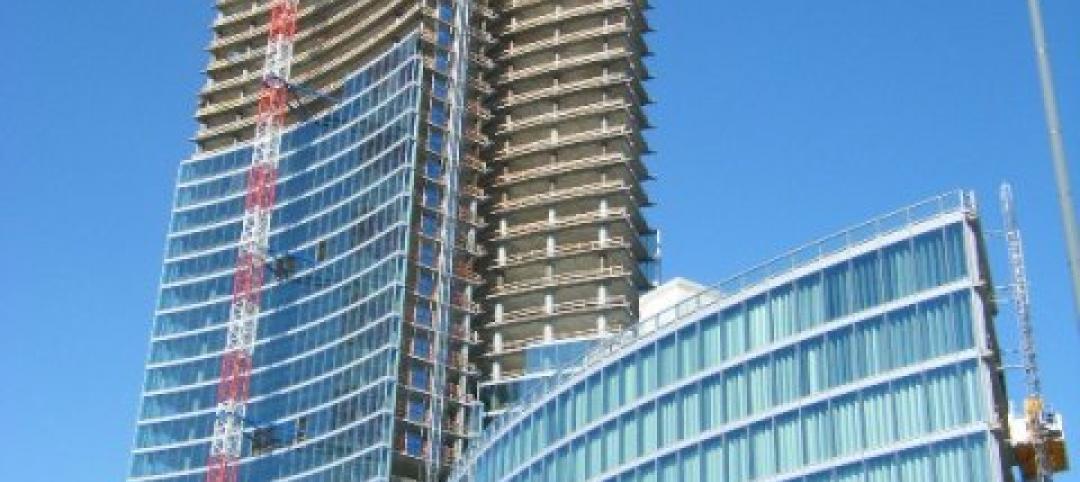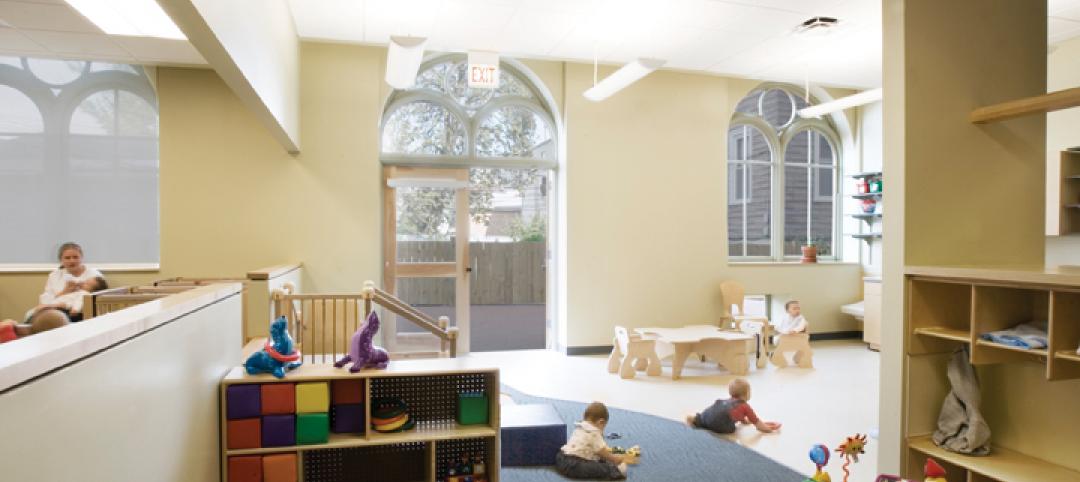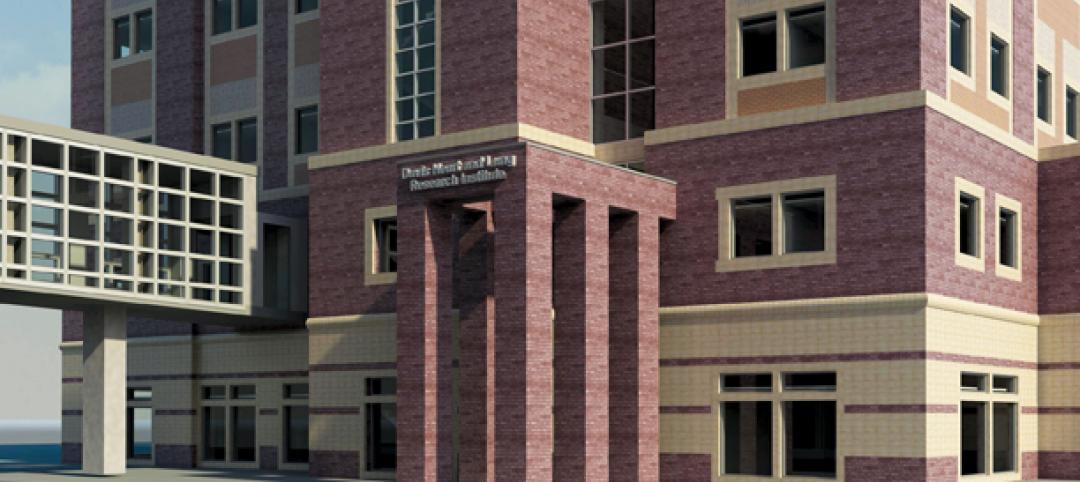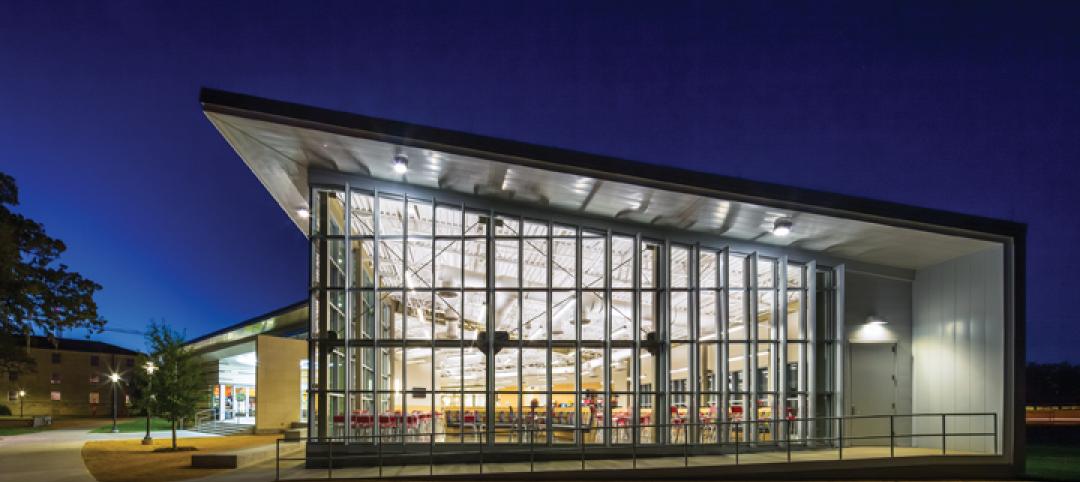Construction input prices dipped 1.4% during the final month of 2014 and are down nearly 1% on a year-over-year basis, according to the Jan. 15 producer price index release from the U.S. Department of Labor.
Inputs to nonresidential construction fell even further, down 1.7% for the month and 1.9% year over year. December's report marks the sharpest decline in input prices since late 2008 during the global financial crisis and the fifth consecutive month construction materials prices have failed to rise.
"Without question, financial markets have been unnerved by the recent declines in oil, copper and other commodity prices, although that jitteriness does not necessarily imply a serious economic problem in America," said Associated Builders and Contractors Chief Economist Anirban Basu. "The fact is the U.S. economy has performed handsomely over the past nine months, according to most metrics, and conventional wisdom suggests that it can continue to expand at or above trend rates of growth despite economic weakening in Europe, China and elsewhere. This is further evidenced by the World Bank's recent downgrade of its forecasts for global growth in 2015 and 2016, while it upgraded its outlook for the United States.
"Overall, the view that U.S. domestic demand for construction services and most other services continues to expand is consistent with the fact that some domestically produced and consumed materials actually registered price increases last month," said Basu. "Note that concrete prices are up by 5% on a year-over-year basis while natural gas prices are up by 10%."
The following materials prices increased in December:
• Prices for plumbing fixtures expanded 0.1% in December and are up 3.1% on a year-over-year basis.
• Concrete products prices expanded 0.7% in December and are up 5% on a yearly basis.
• Natural gas prices expanded 19.7% in December and are 10% higher than one year ago.
• Fabricated structural metal product prices grew 0.3% for the month and have expanded 1.5% on a year-over-year basis.
• Seven of the 11 key construction inputs did not experience price increases for the month.
• Iron and steel prices fell 1% in December and are down 3.9% from the same time last year.
• Nonferrous wire and cable prices fell 1.6% on a monthly basis and 1.5% on a yearly basis.
• Prices for prepared asphalt, tar roofing, and siding fell 1% for the month but are up 1.9% on a year-ago basis.
• Steel mill products prices fell 1.3% for the month but are 0.4% higher than one year ago.
• Softwood lumber prices fell 1.3% in December but are 0.3% higher than one year ago.
• Crude petroleum prices fell 18.9% in December and are down 37.1% from the same time last year.
• Crude energy materials prices fell 4.7% in December but are 19.6% lower year-over-year.
Related Stories
| Jan 16, 2013
SOM’s innovative Zhengzhou Greenland Plaza opens
The 2.59-million-square-feet building houses a mixed-use program of offices on its lower floors and a 416-room hotel.
| Jan 15, 2013
Morris Architects joins Huitt-Zollars
Morris, which will continue to provide services under its current name and leadership, is entering its 75th year of continuous practice as an architectural, interior design, landscape architecture, and planning firm.
| Jan 11, 2013
HMC Architects: In their own voices
See what HMC professionals say about their “Best AEC Firm to Work For”
| Jan 10, 2013
Guide predicts strongest, weakest AEC markets for 2013
2013 Guide to U.S. AEC markets touts apartments, natural gas, senior housing and transmission and distribution.
| Jan 9, 2013
Panasonic and Bluebeam preview new architect app at CES 2013
Panasonic and Bluebeam Software collaborate to develop and introduce the 4K tablet and software to the design and construction industry.
| Jan 3, 2013
Answered prayers
A bold renovation enables a small church to expand its mission on a grand scale.
| Jan 3, 2013
Top BIM/VDC articles of 2011-2012
A compendium of BD+Cs top building information modeling and virtual design + construction articles from 2011-12.
| Jan 3, 2013
8 trends shaping today’s senior housing
The ranks of those age 65 and older are swelling by the thousands every day. Is there an opportunity for your firm in the seniors housing market?
| Jan 2, 2013
Trends Report: New facilities enhance the quality of campus life
Colleges and universities are building state-of-the-art student unions, dining halls, and other non-academic buildings to enrich the campus experience, boost enrollment, and stay competitive.


